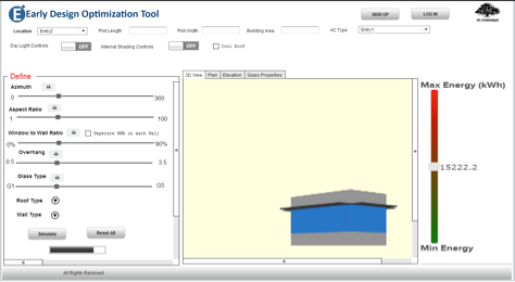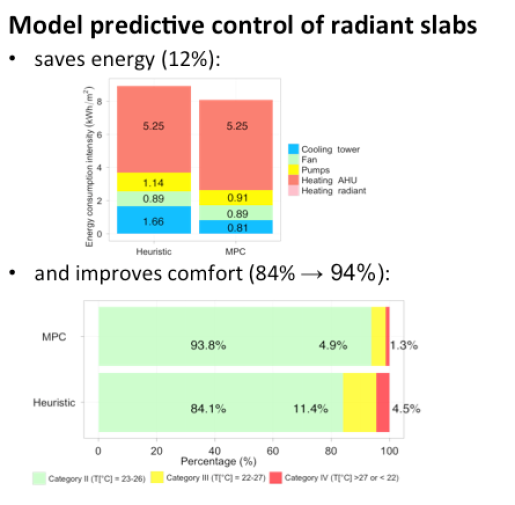Lead Performer: Lawrence Berkeley National Laboratory – Berkeley, CA
Partners:
-- University of California, Berkeley
-- International Institute of Information Technology, Hyderabad, India
DOE Funding: $875,000
Cost Share: $1,100,000
Project Term: FY13 - FY17
Funding Type: Joint Clean Energy Research and Development FOA (DE-FOA-0000506)
PROJECT OBJECTIVE
The applications for simulation span the design and operational life cycle of buildings and are critical in completing the feedback loop that enables actual performance in operation to inform future designs. Simulation can be used to compare design alternatives, evaluate energy code compliance and certify post-construction energy performance through the use of rating and labeling programs. The Simulation and Modeling task focuses on practitioners that design and operate energy systems in buildings and on technical areas identified by stakeholders in India and in DOE’s Building Technologies Program Multiyear (2011-2015) Work Plan. We aim to add significant capabilities to existing and new building design, operation, and evaluation tools in order to promote dramatic improvements in energy efficiency by:
- Reducing barriers to energy efficiency by enabling the use of practitioner-oriented, interoperable simulation tools for integrated design, commissioning and operation
- Developing new methods for reducing the energy consumption and managing the peak load of existing and new buildings – focusing on controls and automated diagnostics.
PROJECT IMPACT
- Specification and development of eDOT, an early design optimization tool for predicting building energy use early in the design process.
- Automation of performance-based code compliance (Appendix G and Indian Energy Conservation Building Code ECBC).
- Model predictive control (MPC) of radiant slab cooling for energy savings and peak load reduction/shifting.
- Model-based fault detection and diagnosis (FDD) for commissioning and routine operation of dedicated outdoor air systems (DOAS) developed in a new Fault Detection and Diagnostics (FDD) laboratory at IIIT.
CONTACTS
DOE Technology Manager: Karma Sawyer, Amir Roth
Lead Performer: Philip Haves, Lawrence Berkeley National Laboratory, Berkeley CA
Related Publications
- Pang, X., Nouidoui, T. S., Wetter, M., Fuller, D., Liao, A. and Haves, P. “Energy Simulation in Real Time through an Open Standard Interface.” Energy and Buildings. 2015
- Garg, Vishal, Abhishek Mittal, Rounak Patni, Rathish Arumugam, Aviruch Bhatia, Phil Haves. “WinOpt – An Early Stage Design Tool for Optimizing Window Parameters.” Proceedings of Passive and Low Energy. Ahmedabad, India. December 2014.
- Chuang, Frank, and Francesco Borrelli. "Optimality of Certainty Equivalence in Expected Value Problems for Uncertain Linear Systems." Proceedings of IEEE CDC. Los Angeles. December 2014.
- Frank Chuang, and Francesco Borrelli. “Dynamic state and input aggregation.” Proceedings of the. American Control Conference. 2015.
- Feng, Jingjuan (Dove), Frank Chuang, Francesco Borrelli, and Fred Bauman. "Model Predictive Control of Radiant Slab Systems with Evaporative Cooling Sources." Energy and Buildings. 199-210. 2015.
- Garg, Vishal, Kshitij Chandrasena, Jyotirmay Mathur, Surekha Tetalia and Akshey Jawaaa. “Development and Performance Evaluation of a Methodology, Based on Distributed Computing for Speeding Energy Plus Simulation.” Journal of Building Performance Simulation, 4(3), 2011.


